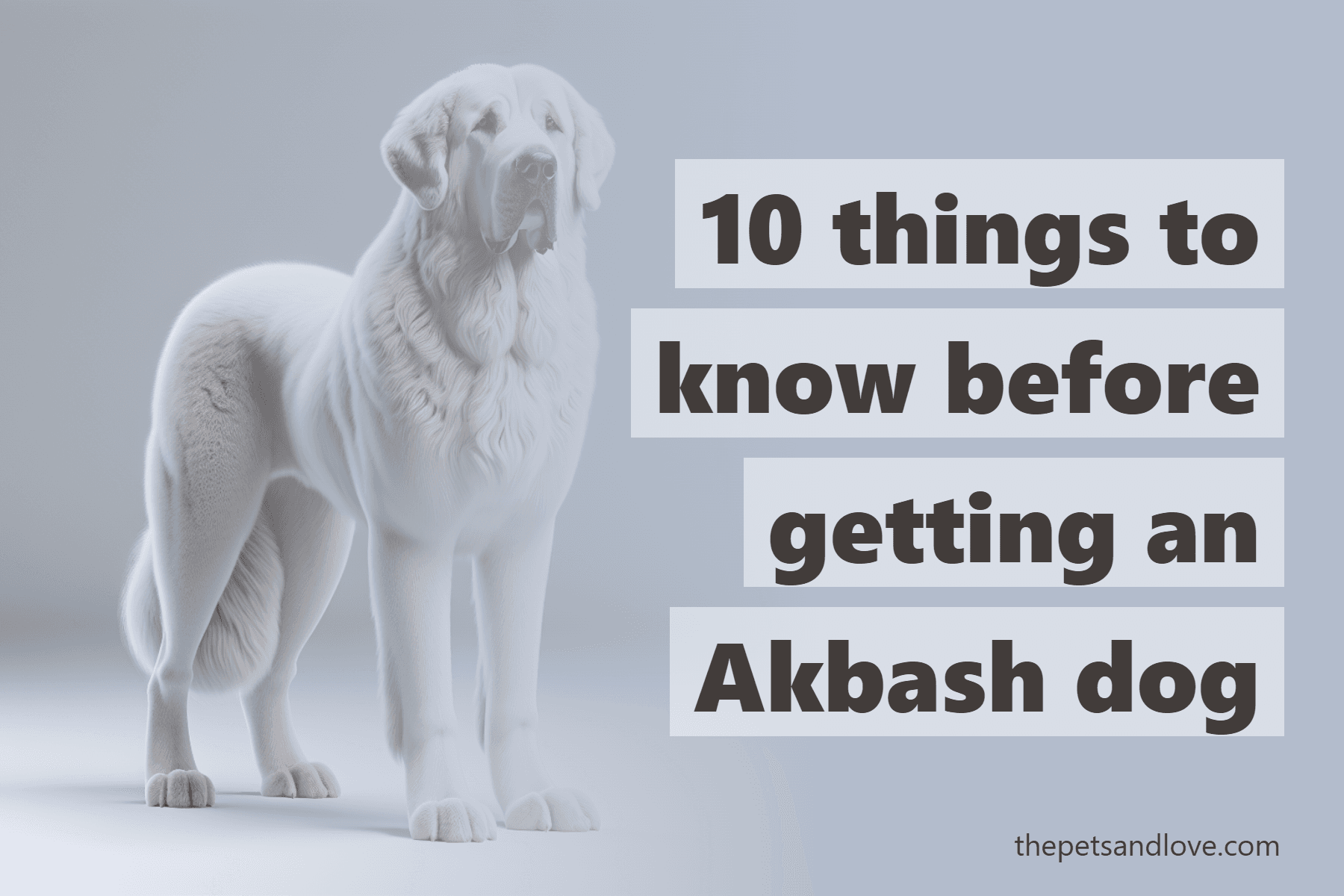10 things to know before getting an Akbash dog

The Akbash is not your average house dog — and that’s exactly what makes it so special. Originally from Turkey, this big, white livestock guardian was bred to think independently, protect fiercely, and chill hard when the job’s done. If you’re considering adding one to your family, here’s what you really need to know, from someone who’s spent years around working breeds and understands their unique personalities.
First off: they’re huge (and strong)
Akbash dogs tip the scales at 75 to 140 pounds and can stand over 30 inches tall. They’re lean yet powerful, kind of like a mix between a sighthound and a mastiff. Don’t be fooled by their calm demeanor — when they move, they’re surprisingly fast and agile. That arched back gives them a springy stride, which is helpful when they’re on the lookout for predators.
Guardian instincts are baked in
These dogs were bred to protect — no training required to bring out that instinct. They’re naturally watchful, calm, and independent thinkers. If raised properly, they won’t be aggressive, but they will bark to alert you to anything unfamiliar. And if they weren’t raised with other dogs or animals? They might see them as threats.
If you’ve got livestock or a large property, this breed shines. But if you're just looking for a chill family pet in a suburban neighborhood, the Akbash might be more than you bargained for.
Not for first-time dog owners
Let’s be honest — this is not the breed to start with if you’re new to dogs. The Akbash needs a handler who’s calm, confident, and consistent. You’ll need to socialize them early and often, train with a firm but fair hand, and understand how to manage a dog who doesn’t always look to you for direction.
They can be stubborn, especially when they're young, and they take a while to mature — physically and mentally. Think three years before they’re truly “grown up.”
Socialization is everything
A well-socialized Akbash can be a wonderful family dog. But socialization needs to start early and continue throughout their life. Without it, they can become overly suspicious, territorial, or just plain hard to handle. Raised with kids and other pets, they can be gentle and protective. But adult Akbash dogs who haven’t been around children? That’s trickier — they’re strong, and their size alone can knock over a toddler without meaning to.
Grooming and shedding
The Akbash has a thick double coat, whether short or long. They shed moderately most of the year and heavily during seasonal changes. A weekly brushing will help keep things under control — and during heavy shedding, you’ll want to step that up. Baths are rarely needed unless they get into something gross. Don’t forget regular nail trims, ear checks, and dental care.
Exercise: low energy, but still needs space
Despite their size, Akbash dogs are not high-energy. They prefer to lounge and survey their surroundings rather than chase a ball. That said, they still need daily walks and a safe, fenced yard to roam. Underground fences? Forget it. These dogs will blow right through them if they think something needs investigating.
Puzzle toys and light hikes are great for mental and physical stimulation, but don't expect an Akbash to be your jogging buddy. They conserve their energy for when it’s really needed.
Puppies chew — a lot
Akbash puppies are like furry wrecking balls with teeth. They chew, dig, and get into mischief if left unattended or unexercised. Crate training and supervision are your best friends during the first year or two.
Health: mostly sturdy, but watch for weight
Akbash dogs are generally healthy, but like many large breeds, they can be prone to hip dysplasia, bloat, and a few other conditions like epilepsy or heart issues. Regular vet checkups and preventative care go a long way.
One of the biggest risks? Obesity. Because they’re not super active, it’s easy to overfeed without realizing it. Stick to a balanced diet and limit treats. Also, avoid exercise right after meals to reduce the risk of bloat.
They need to be part of the family
While Akbash dogs can live outside and do well in rural environments, they still crave connection with their people. Leaving them tied up in the yard with little interaction? That’s a recipe for trouble. They bond deeply with their families and thrive when treated as part of the pack.
Bottom line: The Akbash is a majestic, fiercely loyal dog that thrives in the right environment — ideally with space to roam, a job to do, and an experienced owner who understands their independent nature. They’re not cuddlebugs, but they’ll watch over your home and loved ones with unwavering dedication.
Thinking of bringing one home? Just make sure you’re ready to meet them where they are: strong, smart, and proud.
Take the Quiz
Is an Akbash Right for You?
The Akbash is a loyal and protective guard dog known for its intelligence and independence. Take this quiz to find out if the Akbash is the right companion for your home. Answer all questions below to discover your compatibility score and get personalized insights.
Question #1: What is the main reason you want a dog?
Question #2: How active is your lifestyle?
Question #3: How much time can you dedicate to your dog daily?
Question #4: What best describes your home environment?
Question #5: What size dog do you prefer?
Question #6: What personality traits do you want in your dog?
Question #7: How much grooming can you handle?
Question #8: Who else lives with the dog?
Question #9: Is this your first dog?
Please answer all 9 questions to see your results
